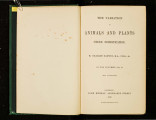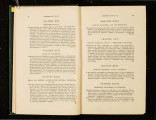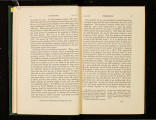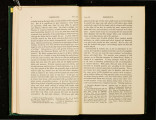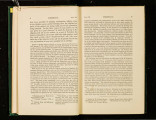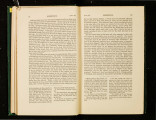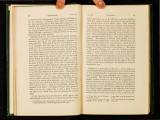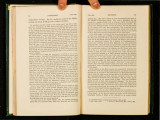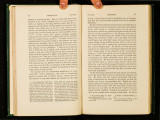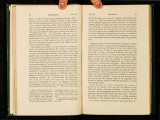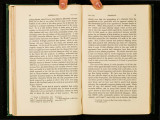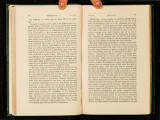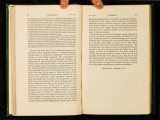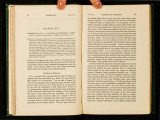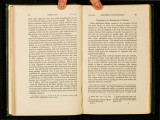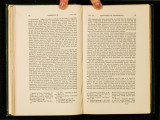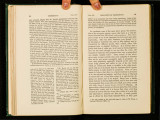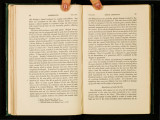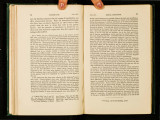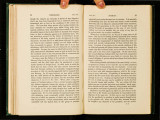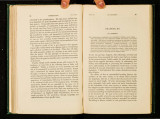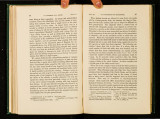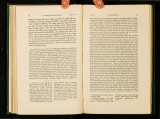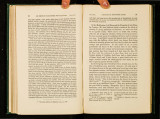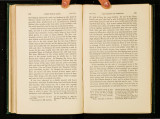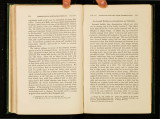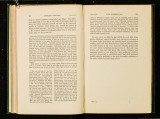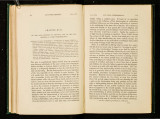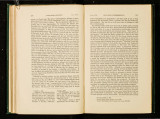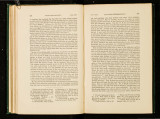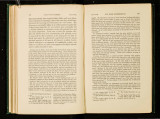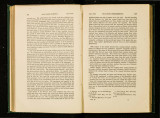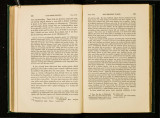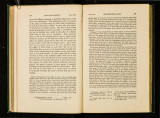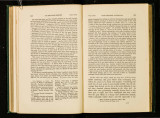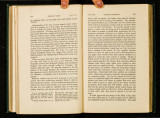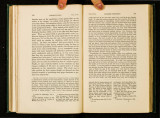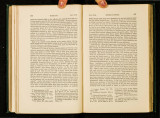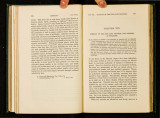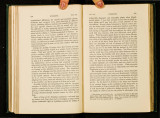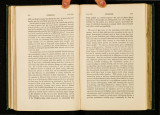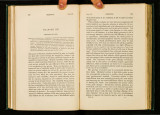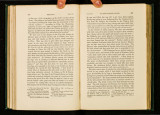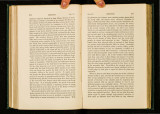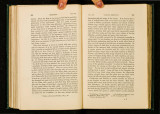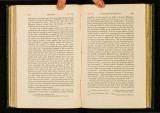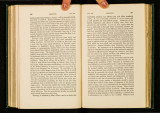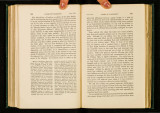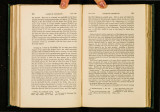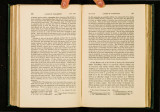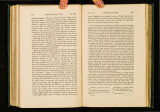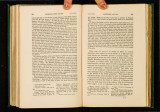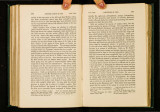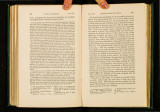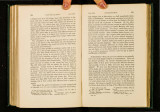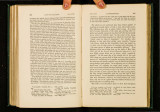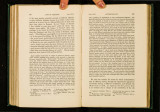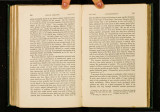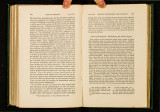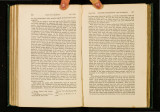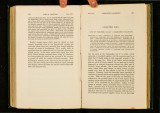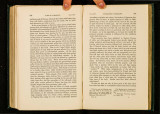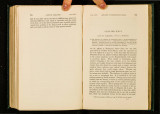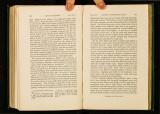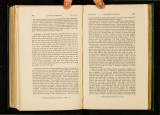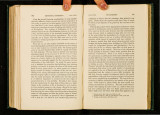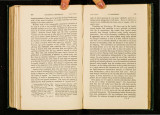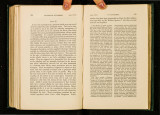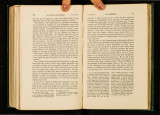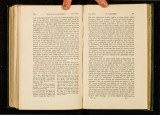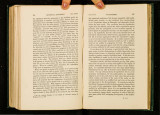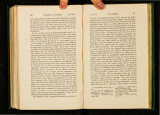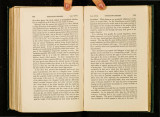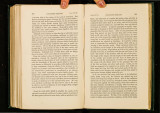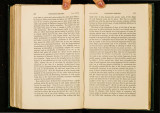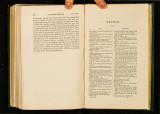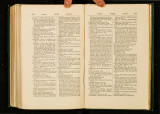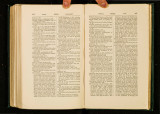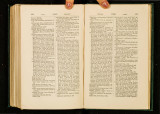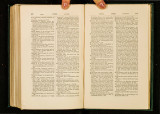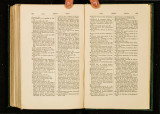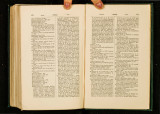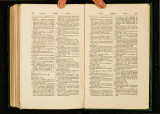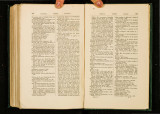| OCR Text |
Show 206 SELECTION CHAP. XX. " (a fine race of the dromedary) as the Arab is in that of his " horse. The pedigrees are handed down, and many a dromedary "can boast a genealogy far longer than the descendants of the "Darley Arabian." 53 According to Pallas the Mongolians endeavour to breed the Yaks or horse-tailed buffaloes with 'vhite tails, for these are sold to the 1 Chinese mandarins as flyflappers; and Moorcroft, about seventy years after Pallas, found that white-tailed animals were still selected for breeding.M vV e have seen in the chapter on the Dog that savages in different parts of North America and in Guiana cross their dogs 'rith wild Caniclre, as did the ancient Gauls, according to Pliny. This was done to give their dogs strength and vigour, in the same way as the keepers in large warrens now sometimes cross their ferrets (as I have been informed by Mr. Yarrell) with the wild polecat, "to give them more devil." According to V arro, the wild ass was formerly caught and crossed with the tame animal to improve the breed, in the same manner as at the present day the natives of Java sometimes drive their cattle into the forests to cross with the wild Banteng (Bos sondaicus).55 In Northern Siberia, among the Ostyaks the dogs vary in markings in different districts, but in each place they are spotted black and white in a remarkably uniform manner; 56 and from this fact alone we may infer careful breeding, more especially as the dogs of one loc.ality are famed throughout the country for their superiority. I have heard of certain tribes of Esquimaux who take pride in their teams of dogs being uniformly coloured. In Guiana, as Sir R. Schomburgk informs me/7 the dogs of the Turuma Indians are highly valued and extensively bartered : the price of a good one is the same as that given for a wife: they are kept in a sort of cage, and the Indians "take great care when the female is in season to prevent her uniting with a clog of an inferior description." The Indians told Sir Robert that, if a dog proved bad or useless, 53 'The Great Sahara,' by the Rev. H. B. 'rristram, 1860, p. 238. 5 ~ Pallas, 'Act. Aead. St. Petersburg,' 1777, p. 249; l\iooreroft and Trebeek, 'Travels in the Himalayan Provinces,' 1841. 55 Quoted from Raffles, in the ' Indian Field,' 1 85!), p. 196 : for Varro, see Pallas, ut Slbpm. 56 Erman's ''!'ravels in Siberin,' Eng. translat., vol. i. p. 453. 57 See also ' Journal of R. Geograph. Soc.,' vol. xiii. part i. p. 65. CITAP. XX. BY SEMI-CIVILISED PEOPLE. 207 he was not killed, but was left to die from sheer neglect. Hardly any nation is more barbarous than the Fuegians, but I hear from 1\'Ir. Bridges, the Catechist to the Mission, that, " when these savages ha\'e a large, strong, and active bitch, they " take care to put her to a fine clog, and even take care to feed " her well, that her young may be strong and well favoured." In the interior of Africa, negroes, who have not associated with white men, show great anxiety to improve their animals: they "always choose the larger and stronger males for stock:" the M:alakolo were much pleased at Livingstone's promise to send them a bull, and some Bakalolo carried a live cock all the way from Loancla into the interior.58 Further south on the same continent, Andersson states that he has known a Damara give two fine oxen for a dog vYhich struck his fancy. The Damaras take great delight in having whole droves of cattle of tho same colour, and they prize their oxen in proportion to the size of their horns. " The N amaquas have a perfect mania for "a uniform team; and almost all the people of Southern Africa " value their cattle next to their women, and take a pride in " possessing animals that look high-bred." " They rarely or " never make use of a handsome animal as a beast of burden." 59 The power of discrimination which these savages possess is wonderful, and they can recognise to which tribe any cattle belong. Mr. Andersson further informs me .that the natives frequently match a particular bull with a particular cow. The most curious case of selection by semi-civilised people, or indeed by any people, which I have found recorded, is that given by Garcilazo de la Vega, a descendant of the Incas, as having been practised in Peru before the country was subjugated by the Spaniarcls.60 The Incas annually held great hunts, when all the wild animals were driven from an immense circuit to a central point. The beasts of prey were first destroyed as injurious. The wild Guanacos and Vicunas were sheared ; the old males and females killed, and the others set at liberty. The various kinds of deer were examined; the old males and females ss Livingstone's 'First Travels,' pp. 191, 439, 565: see also 'Expedition to the Zambesi,' 1865, p. 495, for an analogous ease respecting a good breed of goats. 59 Andersson's 'Travels in South Africa,' pp. 232, 318, 319. 60 Dr. Vavasseur, in 'Bull. de la Soc. d'Aeelimat.,' tom. viii., 1861, p. 136. |





